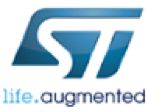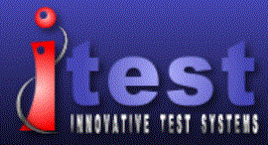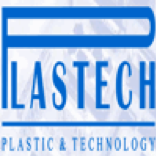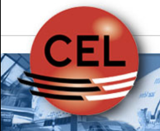Synthèse
The global market for electronic components is showing strong growth trends, driven by the rapid development of innovations such as 5G, electric vehicles and the growing adoption of renewable energies. In 2021, the market expanded strongly by 6.2%, following modest growth of 3.3% in 2020 - a rise driven by the COVID-19 crisis, which accelerated demand for active components with the rise of remote working and intensified data center activity. The European electric car market in particular has seen exceptional growth, with new registrations rising from around 60,000 electric cars to almost 1.3 million by 2020, representing a compound annual growth rate (CAGR) of 47.4%.
France has established itself as a major player on the European scene, with its electronic components market generating sales of almost €15 billion and providing substantial added value to the country's industry. However, the electronics industry is facing challenges such as an unprecedented global shortage of components, particularly in semiconductors, which has led to a significant impact on production, with a potential of one million unproduced vehicles in the automotive sector in the first quarter of 2021 alone. Despite these challenges, the market outlook remains positive, with continued innovation and strong demand for electronics.
Booming demand for electronic components as part of the digital and automotive revolution
Demand for electronic components has risen spectacularly, largely fuelled by the digital revolution and significant advances in the automotive industry. The French market, which is establishing itself as a player in its own right in this landscape, stands out for its cutting-edge electronics industry, which encompasses producers of various electronic components, assembly designers and software developers for electronic system design. The French electronics industry benefits in particular from a vast network of highly specialized laboratories, schools and universities. Market demand is mainly fuelled by the growing use of nanoelectronics and power electronics, which are an integral part of the digital revolution and the energy transition. This need extends to assembly and integration functions, which has an impact on important markets that are today showing a growing need for electronics. For example, the advent of electric and autonomous vehicles has transformed the automotive industry, dramatically increasing demand for electronic components.
In addition, all industries are seeking to exploit the potential of their products or processes by integrating electronic components to facilitate data transmission and processing. The automotive industry has a substantial share of around 36%, and the industrial sector is not far behind with around 37% of the value of the electronic components market, these two areas being the main drivers of demand. Although the automotive industry suffered a setback during the COVID-19 crisis, with production down by around 28.5%, the overall trajectory suggests a recovery underpinned by structural changes, including increased vehicle electrification of vehicles, greater connectivity of on-board systems and increased safety mechanisms. Connected objects and the Internet of Things (IoT) are another booming area contributing to market growth. These technologies merge digital and electronic technologies, influencing sectors as diverse as intelligent housing, industry and transportation.
According to a study by Roland Berger, the market for connected objects in France is valued at between 10 and 20 billion euros, with the smart home taking the lion's share at 28% of market value. Industrial applications follow close behind at 23%, while transportation accounts for 20% of the market's value. The B2C segment of connected objects is particularly robust. This spike can be attributed to significant changes in consumer behavior and advances in the underlying technologies, which integrate key electronic componentss, such as RF components up to millimeter frequencies and silicon photonics, processors, optical sensors and embedded intelligence with cybersecurity control.
In the midst of these developments, it is imperative to recognize the unprecedented shortage of electronic components that the world is currently facing. This shortage is due to an unprecedented worldwide shortage of electronic components
The electronic components market is a battleground for innovation, efficiency and strategic positioning, with a league of players who have etched their names into the technological backbone of many industries.
- Intel is a titan in the field of microprocessors and integrated circuits. A figurehead of the computing landscape, Intel's chips power a plethora of devices, from the servers that form the backbone of the Internet to the personal computers that have become ubiquitous in homes and offices worldwide.
- Samsung Electronics is another colossal player, not only in consumer electronics, but also in the electronic components market. Samsung's prowess is not limited to its popular smartphones and televisions; the company is also a major manufacturer of semiconductors, memory chips and display panels, powering both its own products and those of other tech giants.
- Qualcomm is renowned for its innovations in wireless technology, including the development of advanced 5G infrastructure and compatible chips. As the world stands on the brink of widespread 5G deployment, Qualcomm's lead in modem technology gives it a strong market position.
- TSMC, or Taiwan Semiconductor Manufacturing Company, is the world's largest independent semiconductor foundry. The company's expertise lies in its prowess in manufacturing chips for customers who do not have its own design capabilities, and it is a key player for a host of renowned technology companies.
- The Thales Group, which has a strong presence in the defense, aerospace and security markets, also plays an important role in the electronic components sector. Its cutting-edge technologies and high-reliability systems are evidence of its influence in the most specialized market segments.
- STMicroelectronics, headquartered in Geneva, Switzerland, but with strong roots in the French market, contributes significantly to a range of sectors, including automotive, industrial and personal electronics, with its semiconductor solutions.
- Gemalto, now part of the Thales Group, continues to be recognized for its expertise in digital security, providing a range of services and solutions for secure electronic transactions.
- Morpho/Idemia, renowned for its biometric technologies, uses electronic components to provide advanced security systems and identity solutions, playing a crucial role in areas such as border control and banking.
- Actia Group, Composants Electroniques Lyonnais (CEL), Secre Composants Electronse focus on the design and manufacture of electronic equipment for the automotive, industrial and telecommunications sectors.
à la compréhension de ce marché
Détail du contenu
 Informations
Informations
- Nombre de pages : 30 pages
- Format : Version digitale et PDF
- Dernière mise à jour : 16/05/2022
 Sommaire et extraits
Sommaire et extraits
1 Market summary
1.1 Market definition and structure
The electronic components market is a very large market. We consider that an electronic component is an element intended to be assembled with others in order to realize one or more electronic functions. The components form many types and categories, they meet various industrial needs, especially because of their electrical characteristics. The assembly of these electronic components is defined beforehand in a layout diagram which precedes the installation of these components in an electronic circuit.
We traditionally distinguish two categories of components, the active components (diode, transistor, integrated circuit, etc.) and the passive components (resistance, capacitors, etc.). Active components are electronic components that increase the power of a signal (voltage or current), while passive components do not increase the power of a signal, and can even reduce this power in some cases.
On a global scale, it is possible to observe that the world market for electronic components has been doing well for several years. on a global scale, the market is worth nearly $1,400 billion.
Indeed, the printed circuit board and semiconductor segments are relatively dynamic, driven by the rapid development of several innovations such as 5G, electronic cars or the democratization of renewable energy. Due to the complexity of production methods, the electronic components market is largely concentrated and a few international players share the majority of market shares. Thus, among the leaders of this market, we can name Intel, Samsung Electronics or Qualcomm and TSMC.
The market is largely driven by the many electronic and technological innovations that are available on many markets for very diverse productions. In France, the electronic components market is of strategic importance. While the major foreign players, who account for most of the world's market share, play an important role in the French market, a number of local players such as Thales and STMicroelectronics also play an important role at the national and European levels.
1.2 A healthy global market
According to the WSTS, the global electronic components market will grow strongly in ****, with growth of *.*%, following a **** year in which the market grew by only *.*%. Indeed, Asian production continues to drive the market upwards. In addition, the COVID-** crisis has finally had a positive effect on the global market by ...
1.3 The French market is at the forefront of electronic components
The French electronics industry brings together various players:
producers of electronic components, connectors or printed circuits, designers and assemblers of electronic boards and sub-assemblies, distributors or publishers of embedded software and software tools for the design of electronic systems.
The electronics industry is fed upstream by a dense network of laboratories, ...
1.4 The impact of the COVID-19 crisis on the electronic components market
Semiconductors are present in billions of electronic devices. Indeed, all computer systems are composed of small silicon chips that allow information to flow through their circuits. In the spring of ****, lockdown measures caused an explosion in demand for computer hardware to telecommute or entertain at home. More than *** million PCs were ...
2 Demand analysis
2.1 The demand for electronic components, at the heart of the digital revolution
The electronic components market is the essential industrial base for the digital revolution and the energy transition, through nanoelectronics and power electronics technologies to assembly and integration. The market for electronic components is the essential industrial base for the digital revolution and the energy transition, from nanoelectronics and power electronics technologies ...
2.2 The rise of the electric car accelerates the integration of electronic components
The electric car segment has been booming in recent years, driven by the radical change in motorists' habits and the search for new modes of mobility. In addition, the robotization of upstream production methods is strengthening the sector's position as one of the main outlets for the electronic components market, with ...
2.3 The democratization of connected objects and the IoT is driving demand for electronic components
The digital wave is ushering in a period of profound transformation in all sectors of the economy, both services and industry. Within this wave, connected objects and the Internet of Things (***) is the most important market for connected objects and represents **% of the market value. The industrial sector represents **% of the ...
3 Market structure
3.1 Simplified diagram of the market structure
The value chain of electronic components is broken down into four stages as shown in the diagram above:
The suppliers: they will provide the manufacturers with raw materials. The most used is certainly silicon. They can either provide the raw material or offer it in the form of processed products; Research ...
3.2 The production of electronic components is concentrated in Asia
Producing electronic components therefore implies an important basic investment in order to benefit from the best infrastructures. The quality of an electronic component will determine the success of its manufacturers. The complexity of manufacturing makes it particularly difficult for newcomers to enter. The French market is therefore dominated by major players ...
3.3 Global distribution of electronic components
Because electronic components are both fragile and valuable, the choice of distributors is particularly important. The distribution channels are often integrated into the network of the main manufacturers. The distributors offer a wide choice of products from different producers.
In ****, forecasts for the turnover of electronic components distributors indicated an increase ...
4 Analysis of the offer
4.1 The typology of electronic components
Electronic components can be divided into several categories. First of all, there are the active components. The purpose of this electronic component is to increase the power of a signal (***). We find the following most common semiconductors :
The diode: nonlinear and polarized dipole (***); The transistor: based on a system of three ...
4.2 Price list for electronic components
The prices of electronic components can vary considerably depending on the component. It is therefore important to study them individually. To do so, we have based ourselves on the prices proposed by Go Tronic, a leader in the distribution of components.
For the components considered as active, the prices (***) are as ...
4.3 French production is booming
The French production of electronic components is booming. Overall, French electronics production has been growing steadily for several years, at a rate of * to *% depending on the sector of activity. Like its German, Italian and Spanish counterparts, which stood at just €*.* billion in ****, it represented nearly €*.* billion in ****, representing a CAGR ...
5 Rules and regulations
5.1 Legal framework for the electronic components market
The placing on the market of a product is "the first making available of a product on the market of the Union". Generally, a product is placed on the market when it is sold at the end of its manufacturing phase (***) or when it is imported into the Union. The concept ...
6 Positioning of the actors
6.1 Segmentation
- STMicroelectronics
- Morpho / Idemia
- Thales DIS (Digital Identity & Security)
- Actia Groupe
- Forecast Electronics
- Itest
- Capacitec
- Plastech
- Schaller Electronic
- Servotechnics
- Nitron
- Composants Electroniques Lyonnais CEL
- Secre Composants Electroniques
- ERCE Européenne de Composants Electroniques
- Samsung Group
- Nexperia
- Lemo
- Omron
- ROHM Semiconductor
- Acal BFi
- AsteelFlash (USI Group)
- TDK Electronics
 Liste des graphiques
Liste des graphiques
- Marché mondial des composants électroniques
- Valeur du marché mondial des composants électroniques
- Chiffre d'affaires du marché des composants électroniques
- Les débouchés du marchés des composants électroniques
- Production de l'industrie automobile
Toutes nos études sont disponible en ligne et en PDF
Nous vous proposons de consulter un exemple de notre travail d'étude sur un autre marché !
Dernières actualités
Entreprises citées dans cette étude
Cette étude contient un panorama complet des entreprises du marché avec les derniers chiffres et actualités de chaque entreprise :
 Choisir cette étude c'est :
Choisir cette étude c'est :
Accéder à plus de 35 heures de travail
Nos études sont le résultat de plus de 35 heures de recherches et d'analyses. Utiliser nos études vous permet de consacrer plus de temps et de valeur ajoutée à vos projets.
Profiter de 6 années d'expérience et de plus de 1500 études sectorielles déjà produites
Notre expertise nous permet de produire des études complètes dans tous les secteurs, y compris des marchés de niche ou naissants.
Notre savoir-faire et notre méthodologie nous permet de produire des études avec un rapport qualité-prix unique
Accéder à plusieurs milliers d'articles et données payantes
Businesscoot a accès à l'ensemble de la presse économique payante ainsi qu'à des bases de données exclusives pour réaliser ses études de marché (+ 30 000 articles et sources privées).
Afin d'enrichir nos études, nos analystes utilisent également des indicateurs web (semrush, trends…) pour identifier les tendances sur un marché et les stratégies des entreprises. (Consulter nos sources payantes)
Un accompagnement garanti après votre achat
Une équipe dédiée au service après-vente, pour vous garantir un niveau de satisfaction élevé. (+33) 9 70 46 55 00
Un format digital pensé pour nos utilisateurs
Vous accédez à un PDF mais aussi à une version digitale pensée pour nos clients. Cette version vous permet d’accéder aux sources, aux données au format Excel et aux graphiques. Le contenu de l'étude peut ainsi être facilement récupéré et adapté pour vos supports.
 Nos offres :
Nos offres :
the market for electronic components | France
- Quels sont les chiffres sur la taille et la croissance du marché ?
- Quels leviers tirent la croissance du marché et leur évolution ?
- Quel est le positionnement des entreprises sur la chaine de valeur ?
- Comment se différencient les entreprises du marché ?
- Données issues de plusieurs dizaines de bases de données
Pack 5 études (-15%) France
- 5 études au prix de 75,6€HT par étude à choisir parmi nos 800 titres sur le catalogue France pendant 12 mois
- Conservez -15% sur les études supplémentaires achetées
- Choisissez le remboursement des crédits non consommés au terme des 12 mois (durée du pack)
Consultez les conditions du pack et de remboursement des crédits non consommés.
- 05/07/2023 - Ajout des informations de l'entreprise TDK Electronics
- 05/07/2023 - Ajout des informations de l'entreprise AsteelFlash (USI Group)
- 05/07/2023 - Ajout des informations de l'entreprise Acal BFi
- 05/07/2023 - Ajout des informations de l'entreprise ROHM Semiconductor
- 05/07/2023 - Ajout des informations de l'entreprise Omron
- 05/07/2023 - Ajout des informations de l'entreprise Lemo
- 05/07/2023 - Ajout des informations de l'entreprise Nexperia
- 21/02/2023 - Mise à jour des données financières de l'entreprise Samsung Electronics
- 21/02/2023 - Mise à jour des données financières de l'entreprise Thales Digital Identity & Security (ex Gemalto)
- 21/02/2023 - Mise à jour des données financières de l'entreprise STMicroelectronics
- 17/01/2023 - Ajout des informations de l'entreprise Samsung Electronics 1





 Le point sur la situation d'Idemia - 08/03/2024
Le point sur la situation d'Idemia - 08/03/2024
 STMicroelectronics conserverait son titre de champion européen des puces - 20/01/2024
STMicroelectronics conserverait son titre de champion européen des puces - 20/01/2024
 Samsung Digital City à Suwon - 27/07/2023
Samsung Digital City à Suwon - 27/07/2023






















